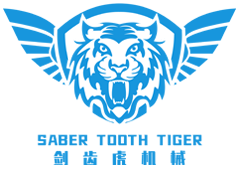-
Maximizing Efficiency in Electrical Manufacturing: The CNC Busbar Bending and Punching Line
In the realm of electrical and electronic manufacturing, the CNC busbar bending and punching line stands out as a crucial piece of machinery that significantly enhances production efficiency and quality. CNC, or Computer Numerical Control, refers to the automated control of machining tools via a computer. This technology plays a pivotal role in shaping and processing busbars, which are essential c
In the realm of electrical and electronic manufacturing, the CNC busbar bending and punching line stands out as a crucial piece of machinery that significantly enhances production efficiency and quality. CNC, or Computer Numerical Control, refers to the automated control of machining tools via a computer. This technology plays a pivotal role in shaping and processing busbars, which are essential components used in electrical distribution systems.
Busbars are typically made of conductive materials like copper or aluminum and are used to conduct electricity within switchgear, panel boards, and other electrical apparatus. The bending and punching processes are critical in ensuring that these busbars fit precisely into their designated applications. The CNC busbar bending and punching line automates these processes, reducing the margin of error and ensuring consistency in the final product.
One of the primary advantages of utilizing a CNC busbar bending and punching line is its capability to improve production speed. Traditional methods often involve manual labor, which can be time-consuming and prone to human error. In contrast, CNC technology allows for rapid programming and execution of complex bending and punching tasks, significantly reducing lead times. This efficiency can lead to faster turnaround times for orders, enabling manufacturers to respond more swiftly to market demands.
Moreover, the precision offered by CNC machinery is unparalleled. With advanced software and technology, manufacturers can achieve intricate designs and specifications that would be challenging to replicate manually. This level of accuracy is vital, especially in industries where safety and reliability are paramount. When busbars are precisely manufactured, the risk of electrical failures and associated hazards diminishes considerably.
Another notable benefit of the CNC busbar bending and punching line is its flexibility. Modern systems can be programmed to handle various sizes and configurations of busbars, making them suitable for a wide range of applications. This adaptability allows manufacturers to diversify their product offerings without the need for extensive retooling or investment in additional equipment.
In addition to enhancing productivity and precision, integrating a CNC busbar bending and punching line can result in cost savings over time. By minimizing waste and reducing the likelihood of defects, manufacturers can improve their overall profitability. Furthermore, the ability to automate processes can lead to a reduced reliance on manual labor, allowing personnel to focus on more complex tasks that require human oversight.
In conclusion, the CNC busbar bending and punching line is an invaluable asset for manufacturers in the electrical and electronic sectors. By leveraging advanced technology, companies can enhance their operational efficiency, improve product quality, and respond effectively to the dynamic demands of the market. As the industry evolves, investing in such innovative solutions will be crucial for maintaining a competitive edge.
Busbars are typically made of conductive materials like copper or aluminum and are used to conduct electricity within switchgear, panel boards, and other electrical apparatus. The bending and punching processes are critical in ensuring that these busbars fit precisely into their designated applications. The CNC busbar bending and punching line automates these processes, reducing the margin of error and ensuring consistency in the final product.
One of the primary advantages of utilizing a CNC busbar bending and punching line is its capability to improve production speed. Traditional methods often involve manual labor, which can be time-consuming and prone to human error. In contrast, CNC technology allows for rapid programming and execution of complex bending and punching tasks, significantly reducing lead times. This efficiency can lead to faster turnaround times for orders, enabling manufacturers to respond more swiftly to market demands.
Moreover, the precision offered by CNC machinery is unparalleled. With advanced software and technology, manufacturers can achieve intricate designs and specifications that would be challenging to replicate manually. This level of accuracy is vital, especially in industries where safety and reliability are paramount. When busbars are precisely manufactured, the risk of electrical failures and associated hazards diminishes considerably.
Another notable benefit of the CNC busbar bending and punching line is its flexibility. Modern systems can be programmed to handle various sizes and configurations of busbars, making them suitable for a wide range of applications. This adaptability allows manufacturers to diversify their product offerings without the need for extensive retooling or investment in additional equipment.
In addition to enhancing productivity and precision, integrating a CNC busbar bending and punching line can result in cost savings over time. By minimizing waste and reducing the likelihood of defects, manufacturers can improve their overall profitability. Furthermore, the ability to automate processes can lead to a reduced reliance on manual labor, allowing personnel to focus on more complex tasks that require human oversight.
In conclusion, the CNC busbar bending and punching line is an invaluable asset for manufacturers in the electrical and electronic sectors. By leveraging advanced technology, companies can enhance their operational efficiency, improve product quality, and respond effectively to the dynamic demands of the market. As the industry evolves, investing in such innovative solutions will be crucial for maintaining a competitive edge.
Related news




